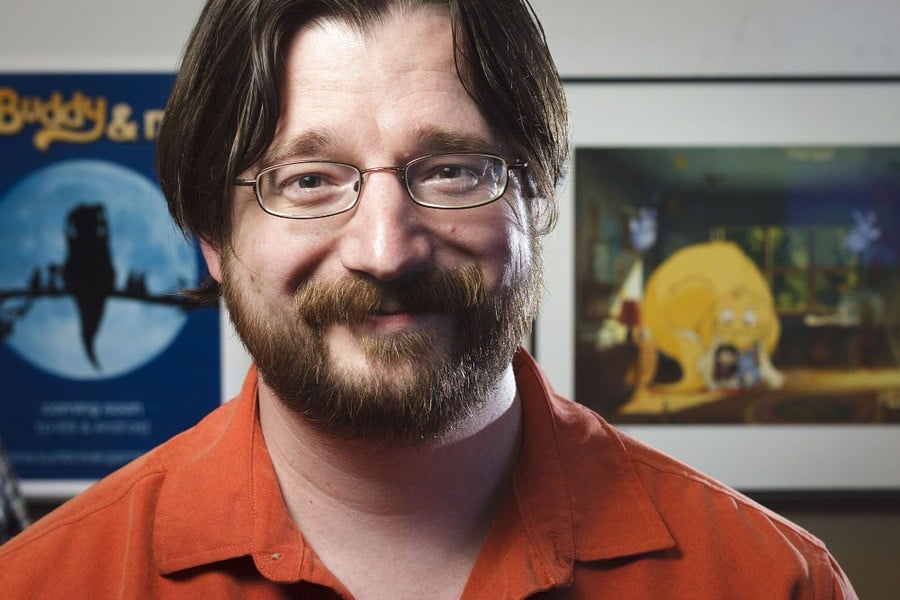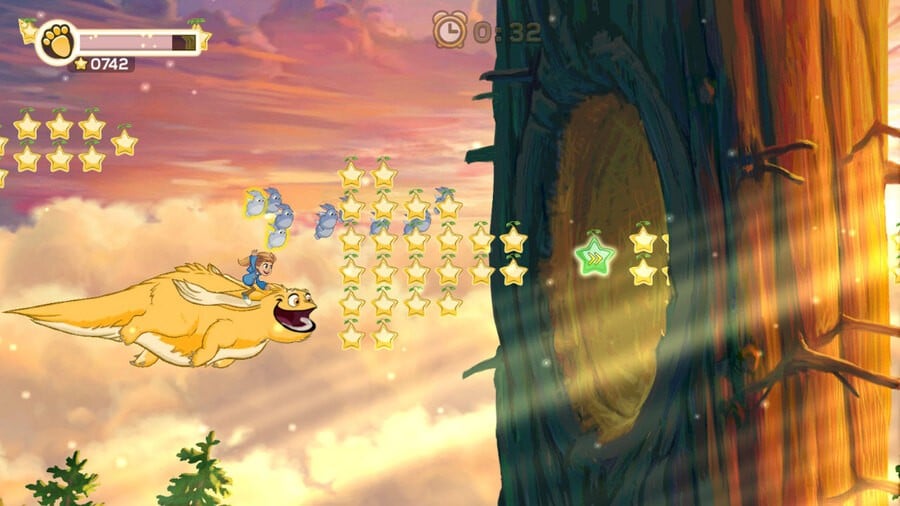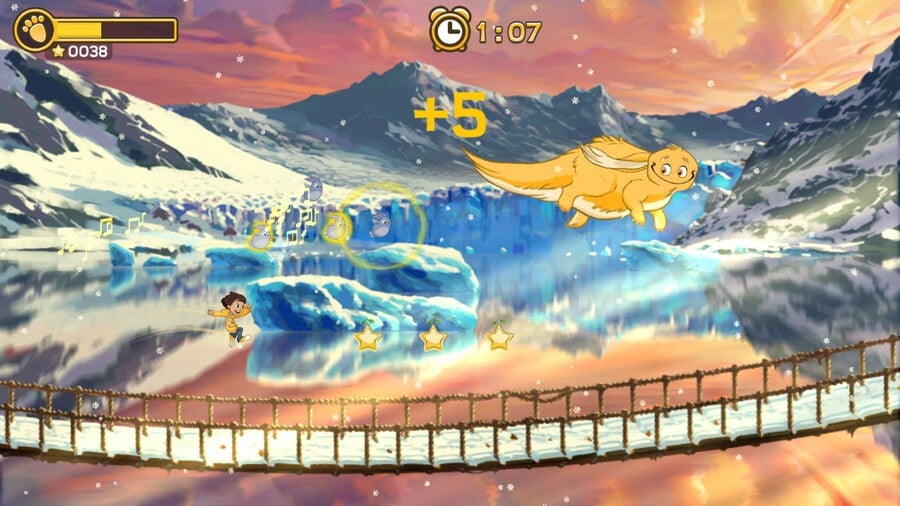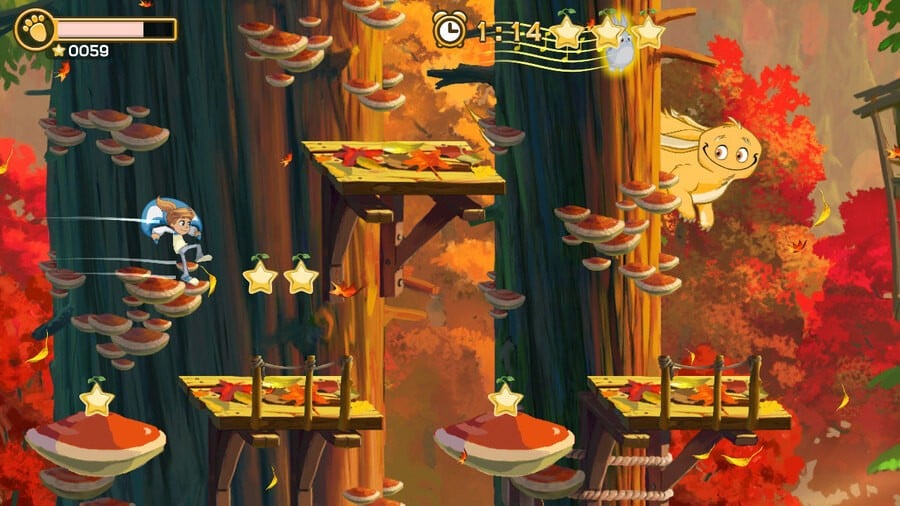
Along with the regular slew of digital releases in the weekly update of eShop downloads, today marks the release of Buddy & Me: Dream Edition. Starting life as a mobile game born of a Kickstarter campaign, Dream Edition takes the best of the endless runner and incorporates new content exclusive to Nintendo's home console.
We recently caught up with Jason Behr - the mastermind behind Buddy & Me - to discuss going indie, advice from Mr. Iwata, and the the latest release from his studio, Sunbreak Games.

Thanks so much for taking the time to talk to us! Can you please introduce yourself to our readers?
My name is Jason Behr, and I'm the founder and Creative Director at Sunbreak Games, a small indie studio in the Seattle area. I left AAA game development to focus on smaller-scale family-friendly games with positive themes.
Can you tell us a little about Buddy & Me: Dream Edition?
Buddy & Me is what I like to call an endless dream about friendship. It's about a child that dreams of the same enchanted forest every night, where he plays with his giant flying best friend, Buddy. Buddy is always watching out for you, helping when needed, even taking you flying through the clouds. We set out to re-imagine the rules of the endless runner genre for a unique experience, focusing on the nostalgia of childhood exploration and companionship.
One of the game's not-so-obvious features is that the engine evaluates your skill level on the fly, and then quietly adjusts difficulty accordingly as it streams in upcoming random level sequences, so it's both accessible to all and challenging to those who want it. This has the two-fold benefit of a slightly different/random level experience each time, as well as being able to automatically adjust to an appropriate comfort level for any age or skill.
There were a lot of personal experiences that inspired it, from childhood pets to the incredible landscapes we get to see hiking around our Seattle office.
What were some of your inspirations when designing both the gameplay and artistic style for Buddy & Me?
There were a lot of personal experiences that inspired it, from childhood pets to the incredible landscapes we get to see hiking around our Seattle office… but one of the stronger influences was the animated film My Neighbor Totoro. But that's not just for the obvious 2D artistic influences. As a film, Totoro is unique in its childhood reverence and in that it doesn't have a traditional antagonist. In the same way, we challenged ourselves to create a relaxing experience without typical game enemies or threats.
The other inspiration was the long-standing desire to express friendship in games. Not just stating it in story, but to show the genuine care between characters. In order to allow players to notice that relationship, first we needed to invent game mechanics that would bring characters together. But then we also had to change the genre's rules, for a greater sense of forgiveness that would make players feel comfortable enough to look around during play. The challenge is certainly there for players that want it, but by default we wanted to create an environment that felt safe and welcoming.

What went into the decision to use Kickstarter to get this project off the ground rather than pitching it to a larger studio?
As a new studio, for our first project I think we just needed some space to prove we could carefully craft our own world, characters, and unique game experience. It required some independence to more easily avoid some of the creative clichés typical to our genre and platforms. Kickstarter allowed us that independence, and our backers have been an incredibly supportive community.
What inspired you to make the jump from working on AAA titles to working on independent projects instead?
Striving to innovate requires a degree of risk and iteration more easily available in an independent setting. On the personal side, after years of working on giant action and shooter games, it was time to focus on more family-friendly content, and imagining games with the potential for positive impact.
Was it difficult working within the constraints of an independent studio that doesn't have the same level of funding that your previous projects might have benefitted from?
I can remember a meeting with Satoru Iwata in which he challenged us to think of games that were both special but could only be made by our specific studio. That has always stuck with me.
Well, there are definitely things I miss from AAA that I probably took for granted at the time, like behind-the-scenes development tools, community, and marketing support. It's also easy to romanticize indie as absolute creative freedom, but eventually you have to make the same types of tough decisions that larger studios do, about how to manage your available time and resources, albeit at a much smaller scale.
What benefits have you found working independently?
I really enjoy the collaboration of the indie community, and the ability to more openly discuss works-in-progress with peers.
You previously worked with Nintendo on the Metroid Prime series. Can you talk a little about your history with Nintendo?
I was lucky enough to join Retro Studios in 2001, just as development on Metroid Prime was ramping up. As a level designer it was an exciting opportunity to discover how to best transform a beloved franchise into a new genre. And as a young designer, it was incredible to be able to learn directly from the talented staff at Nintendo, who were and still are heroes to me.
What, if any, influence did your past experience working on AAA games have on the development of Buddy & Me?
While working on first-person shooters I found that I was always drawn more to the exploration aspects of those games. Crafting moments of discovery and the feeling of traveling through sacred spaces were important aspects of games like Metroid Prime and Halo 4… and despite the vast differences in genre and budget, those central themes still directly carried over to Buddy & Me.
A long time ago while at Nintendo, I can remember a meeting with Satoru Iwata in which he challenged us to think of games that were both special but could only be made by our specific studio. That has always stuck with me. As one interpretation of that advice, the fantasy environments of Buddy & Me are actually based on the real-world landscapes here in the Pacific Northwest of the US, a unique region we've been able to explore in our local outdoors adventures.
Buddy & Me began its life as a mobile game. What made you realize that it would be a good fit for the home console audience as well?
For a startup, mobile made sense as a place to begin for a small studio, and I think in a way we needed to creatively distance ourselves from our recent AAA first-person shooter projects. But what I found really profound was that the moment we announced our Kickstarter mobile campaign, we were overwhelmed with the enthusiasm of the Nintendo community, even before we ever considered console. It was a humbling reminder to embrace our console roots, and a promise that even if it took a while, we wanted the Wii U version to be a huge thank you to everyone that supported us.

What, if any, difficulties did you face in reimagining Buddy & Me as a Wii U game?
The biggest difficulty was a technical one, realizing that the best way to fully take advantage of the Wii U would be to take the extra time to port the game into Unity. That took a very long time, and wouldn't have been possible without help from our amazing partners at Studio Pepwuper and Sky Tyrannosaur.
Are there any Wii U exclusive features that we can look forward to in Dream Edition that we didn't see in the mobile versions?
Aside from improved graphics, we're now allowing players to unlock all kinds of things by collecting Star Seeds during gameplay. We've got some new features that haven't been seen on mobile, like Seasons that change the look of the environment (including unique landmarks per season), and Boosts to help chase high scores. But we've also added some exclusive Outfits to customize characters, and a Concept Art Gallery that gives a behind-the-scenes look at our character and world creation.
Besides Buddy & Me: Dream Edition, is Sunbreak currently working on any other projects?
Alongside Dream Edition, we've been working on an interactive children's book for tablet called Care for Our World, as well as prototyping new projects. There's a range of possibilities, including expanding the world of Buddy & Me.
We would like to thank Jason again for taking the time to speak with us. Click here to learn more about Sunbreak Games and upcoming projects.

Comments 11
Big fan of Jason's work. You should have asked about his relationship with Nintendo Software Technology and Project HAMMER too. He worked on that game and had a lot of the blame placed on his shoulders.
All it screams to me is Disney and that is a good thing in my books
Best of luck to him. Hope he fares a tad better than Inafune; though I do hope Inafune manages to dust himself off from Mighty No.9
As I read this and watch the trailer I keep thinking of "Neverending Story". As a gaming father, I like these Behr's studio's direction.
If nothing else the graphics look nice. The game itself seems to be aimed at young kids.
This game looks gorgeous; shame that it seems to be aimed at a younger audience than myself, but that doesn't deny the fact this looks good!
Love the pacific northwest backgrounds!
I am definitely getting this game. Every once in a while I like to play something fun and relaxing, other times I pick up some online shooter.
Lots of cool news today this is something I may have overlooked without NLife giving it some spotlight! This guy seems very worth supporting, cool he mentioned that about Mr. Iwata it's neat thinking of him visiting studios and giving pep talks. It's cool that he is making family games too these seem like CLEAN fun anyone can play without frustration just pure calm and bunny lalas.
Interesting idea, it does seem like it's geared more towards younger players, slower paced, though it's a nice change from overly fast twitch reaction runnners where crashing feels cheap at times. Does seem to focus on a more relaxing pace.
From a technical game standpoint: The dynamic difficulty sounds interesting, though a question that comes with that is, how long does it minimally take (in time or rounds played) to get to a sustained suitable difficulty level (for an advanced player)? It seems a bit slow to do so, I think a player looking for more complexity and action may unfortunately get bored before the dynamic difficulty swayed their opinion. But from a game development standpoint, it's something to ponder. The art and relaxing style has an appeal of it's own. The price is better than I thought, $5, so it seems like a good value per pricing
I was one of the Kickstarter backers of Buddy and Me, good to see they're still doing well! Good interview, I hope to see more like these on NL.
I agree with what Jason Behr is saying here, about first person (especially of the shooter variety) games being a lot more interesting when they focus more on exploration of wondrous locations, rather than just on combat and mechanical mastery. It's best when games (and their creators) are dedicated and engaging, but don't take themselves too seriously.
Tap here to load 11 comments
Leave A Comment
Hold on there, you need to login to post a comment...